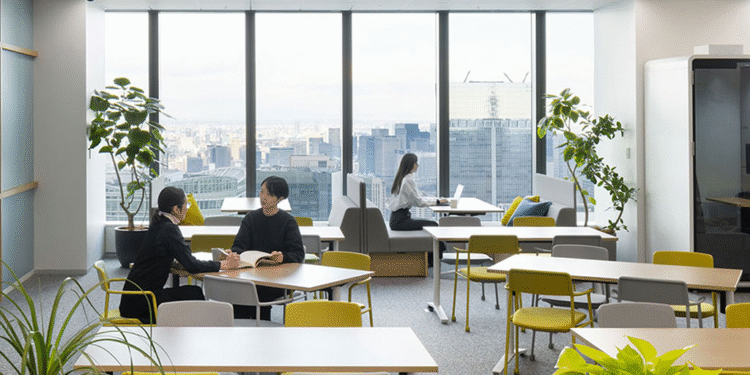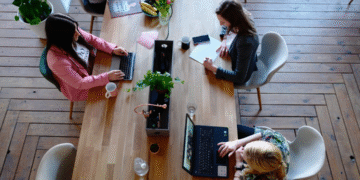The dining world underwent a dramatic shift when the pandemic struck. What once felt cozy and inviting quickly became uncomfortable and even unsafe. Packed rooms that used to signal popularity were suddenly viewed with suspicion, and space between tables became a new form of reassurance.
Millions of people working in restaurants were directly affected by these changes, and the industry had to respond fast. Health expectations shaped design choices, and commercial-grade restaurant furniture suddenly carried the burden of both style and safety. Guests wanted comfort, but above all, they wanted to feel protected. The chairs they sat on and the tables they leaned against became part of their decision to return. Out of this challenge came a wave of creativity and innovation that continues to shape the restaurant industry today.
From Packed Rooms to Open Layouts
For decades, many restaurants focused on maximizing the number of diners they could seat. During the pandemic, that mindset had to shift. Negative space became a design tool, with wider gaps between tables giving diners peace of mind.
Operators removed or replaced furniture, opening up rooms that once felt tight. Communal seating gave way to smaller groups and even solo dining setups. Corners that had never been used for seating were suddenly utilized to regain lost capacity, and staff learned to balance seating efficiency with customer comfort. Guests responded positively, seeing empty space not as a flaw but as a sign of care.
Furniture Materials That Promote Hygiene
Cleanability became a core priority in design. Smooth, non-porous surfaces, such as sealed wood, laminate, and metal, were favored because they could be disinfected quickly. Restaurants are investing in antimicrobial finishes for high-touch areas, such as table edges and chair arms.
Upholstery also saw a transformation, with vinyl and treated fabrics replacing porous textiles that absorbed spills and germs. Diners often watched as staff wiped down tables, and the very act of cleaning in plain view became part of the guest experience. Some venues even leaned into marketing furniture as hygienic, emphasizing features that supported frequent sanitation.
Flexibility Becomes the New Standard
Adaptability rose to the top of the wish list. Lightweight chairs and foldable tables enabled managers to adjust layouts daily, depending on the number of reservations or current safety guidelines. Modular seating systems made it possible to expand for larger groups or contract for smaller gatherings.
Partitions and portable dividers brought privacy as well as safety, giving restaurants a flexible way to manage space. Furniture that could be stacked or stored also became invaluable, helping operators prepare for both high-traffic weekends and slower midweek service. Some venues even added foldaway pieces that turned unused areas into private dining spaces or micro-events.
Outdoor Dining and the Furniture Shift
Few adaptations had as much impact as the explosion of outdoor dining. Cities across the world adjusted regulations, allowing restaurants to expand into sidewalks, streets, and rooftops. New York City alone saw more than 12,000 dining sheds appear, transforming parking spaces into lifelines for struggling businesses.
The cost of these structures ranged from $15,000 to $200,000, depending on the design, and they required durable furniture. Stackable chairs, weighted tables, and weather-resistant materials became the standard. Shade solutions like umbrellas and retractable canopies ensured comfort while keeping diners safe. The result was a reimagining of public space, where outdoor furniture played as important a role as the menu itself.
Technology’s Role in Socially Distanced Dining
The role of technology in design, from QA testing to furniture and more, has grown rapidly. QR codes replaced printed menus, while self-service kiosks appeared even in smaller restaurants. Contactless payment has become common, minimizing shared touchpoints that were once overlooked.
Furniture is also designed for longer outdoor visits by incorporating charging stations or built-in screens. Restaurants embraced the idea that visible cleanliness built trust, so staff often sanitized tables in plain view. This mix of technology and furniture helped bridge the gap between safety and convenience, making guests feel both cared for and connected.
Long-Term Shifts in Guest Expectations
Even now, diners continue to expect more space and cleaner surroundings. Comfort has to be matched with visible hygiene, and guests often choose where to eat based on these standards. Many operators report that loyalty is directly tied to the level of trust customers feel inside the dining room.
The blending of aesthetics with practicality is shaping the future of restaurant furniture. Clean lines and stylish designs go hand in hand with surfaces that can withstand constant cleaning. The pandemic also accelerated delivery and ghost kitchen models, with sales in that category climbing above sixty billion dollars annually, showing how expectations have shifted toward safety and convenience.
Redefining Dining: Space as Safety and Style
COVID changed more than just how restaurants operate. It redefined the purpose of furniture. No longer just decorative, tables and chairs have become essential parts of health and safety planning. Spacing mattered as much as service and cuisine, and guests began to view furniture as part of a restaurant’s promise to protect them.
The industry responded with innovation. Adaptive layouts, hygienic materials, and technology-driven experiences reshaped what it means to dine out. Through these changes, restaurants rebuilt confidence and created spaces that felt safe, stylish, and welcoming. Looking ahead, the lessons learned from this period will remain a guiding force. Restaurants that continue to prioritize comfort, trust, and design will not only thrive but also define the future of hospitality.













